Bowling Lane Secrets: Why Not All Lanes Are Created Equal!
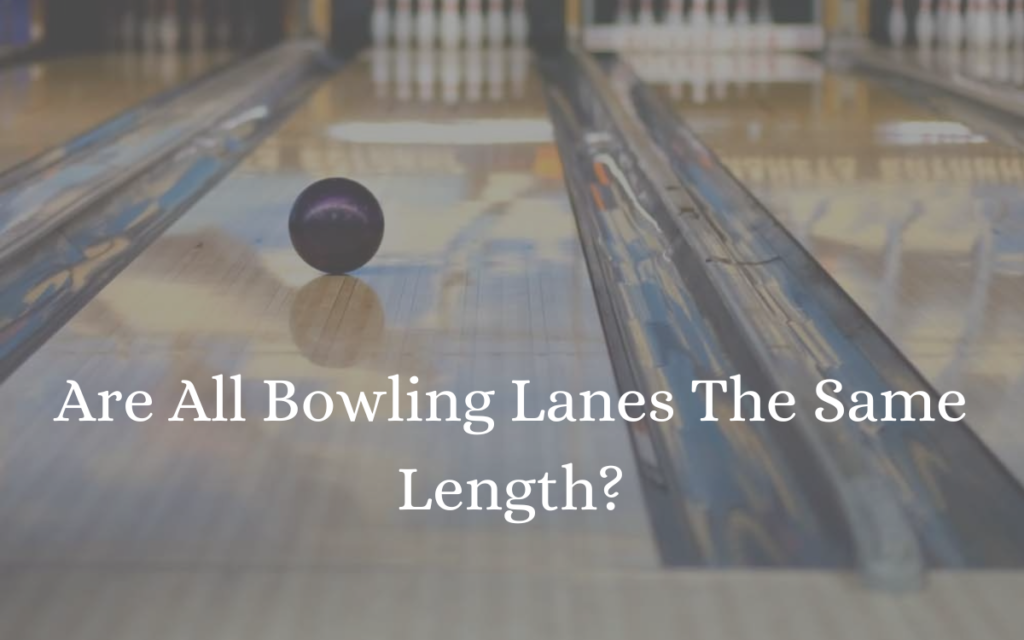
No, the length of each bowling lane differs. Although bowling organizations have standard demands. The canvas on which the game is played is a collection of bowling lanes. Nonetheless not all lanes are produced equivalent, regardless of what the public thinks. Although there are some variants, the basic dimensions comply with the guidelines developed by regulatory bodies. Despite the fact that they are refined these differences have a large effect on gameplay.

How Long Is A Bowling Lane?
The requirements for a bowling lane are diligently set out by the United States Bowling Congress (USBC). Their guidelines specify that a bowling lane ought to be 60 feet long from the foul line to the headpin and also 41 to 42 inches wide. The stability of the game is maintained by this standardization which ensures a level playing area in official competitions.
Lane Discrepancies
The dimension of the lanes can differ somewhat in between bowling alleys. Although they might appear insignificant these variants can have a large influence on exactly how the game plays out.
Inequalities in bowling lane length can be caused by a selection of points consisting of architectural restrictions, wear and tear or perhaps deliberate design choices made by bowling alley owners. A smoother surface area might show up to have longer lanes which might influence ball speed and also trajectory. On the other hand, much shorter lanes might cause faster ball movements necessitating various techniques from players.
Along with length the lane’s slope as well as surface conditions are vital. The game becomes more difficult when there is a mild tilt it can change the ball’s trajectory. Bowlers have to be adaptable since surface conditions which are affected by points like oil patterns and also lane maintenance can become a slick or grippy environment.
Professional bowlers fit at changing their methods to the refined distinctions in between numerous lanes. Players can tweak their method, inevitably improving their performance, by recognizing the specifics of a bowling alley such as any type of variants in length, slope, or surface conditions.
Strategic Adjustments
Bowlers that are experienced on a variety of lanes have the capability to make quick adjustments. A longer lane may ask for a more powerful throw, whereas a shorter lane calls for control and also precision. Players get a competitive advantage by recognizing the unique attributes of each bowling alley which allows them to master a range of challenges.
Why Do Bowling Lanes Vary in Length?
Because of the limitation of the bowling alley’s space and also the needs of the game, bowling lanes were available in a variety of lengths. A number of aspects can cause bowling alleys to be various lengths consisting of:
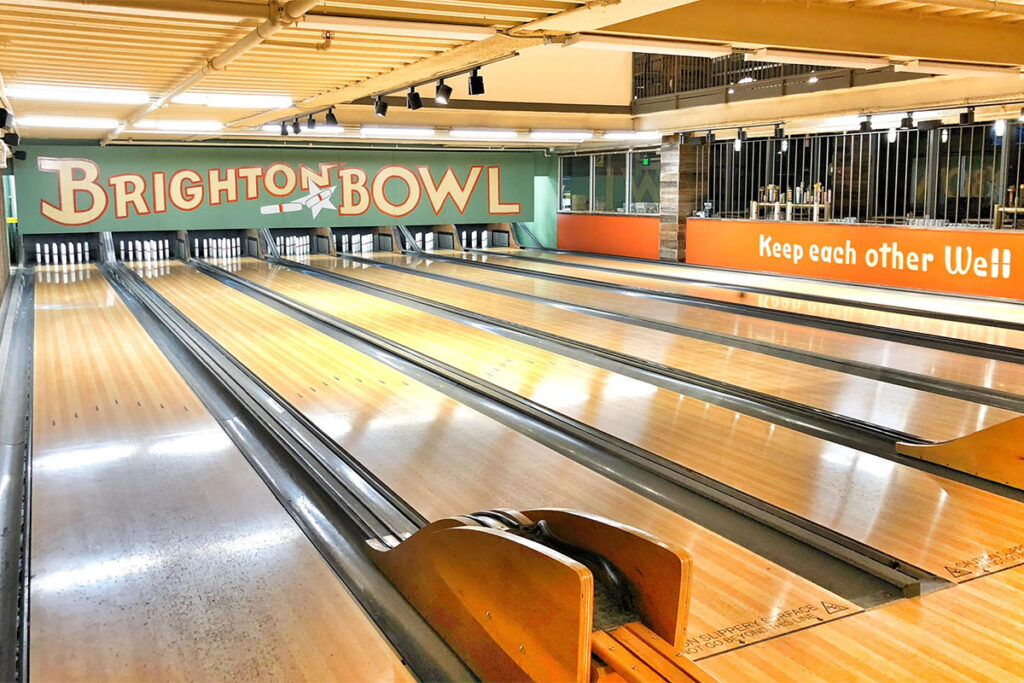
Space Limitations
Bowling alleys can be found in various dimensions as well as relying on the amount of area, the length of the lanes can be altered. While larger bowling alleys can fit standard-length lanes, smaller sized places might have shorter lanes to fit the space.
Building Design
A huge part is additionally played by the buildings layout as well as design. The length of the bowling lanes might be limited by architectural parts like support columns and also walls. Lanes are changed to fit the available space without compromising gameplay or security.
Cost and Construction
Longer lanes call for even more material and also labour throughout construction which can elevate the cost of construction plus maintenance. Shorter lanes can be choosed by bowling alley owners to lower construction costs while still offering an enjoyable plus satisfying bowling experience.
How Long is a Brunswick Bowling Alley?
There are variants although the normal length is 60 feet. Particular lanes might vary in length, regularly as a result of improvement or modification. In lots of circumstances, lanes have actually been reduced shorter to offer even more trouble for experienced bowlers, causing a distinct as well as amazing bowling experience.
How Many Lanes Are In A Bowling Alley?
A normal bowling alley could include anywhere from 8 to 64 lanes or more. Larger bowling centers in urban areas or entertainment complexes may have more lanes up to 116 to accommodate a larger number of bowlers and offer a wider range of league, tournament, and open play opportunities.
What Are the Dots on A Bowling Lane?
If you’ve ever entered a bowling alley, you may have seen a number of thoughtfully positioned dots. What do these dots mean, and how can bowlers use them to improve their shots? Let’s investigate the puzzle of the bowling alley dots.
Placement of Dots
Bowlers might enhance their accuracy by straightening their shots and also aligning their shots with the assistance of the dots on the bowling alley.
Completion of the approach location along with the beginning of the transition area are both important places where these dots are carefully placed.
The Approach Area Dots
The first collection of dots is run into by bowlers as they go into the approach area. Bowlers can utilize these dots as a visual sign to prepare for their shot since they suggest the final thought of the approach.
The positioning of the dots in this field assists bowlers keep a trustworthy plus repeatable technique by helping to set up a continuous starting position.
Transition Area Dots
As bowlers continue down the lane they come across the transition area which is indicated by added dots. These dots suggest the limit in between the bowler’s technique and also the ball delivery which is coming close to the foul line.
Bowlers should put these dots exactly in order to properly identify just how away from the foul line they are.
The Foul Line Dot
Bowlers situate the foul line dot at the end of the transition area. The best marker, this dot shows the limit that a bowler has to not go across when releasing the ball.
Maintaining proper placement with this dot guarantees equitable gameplay as well as presents a level of problem by requiring precision throughout the last moments of the throw.
The Center Dot and Outer Dots
The center dot, which aligns with the headpin’s center, presumes a prominent position within the transition area. Bowlers can utilize this dot as a prime focus to aid them go for the perfect place on their shots.
Bowlers can enhance their goal as well as maintain uniformity throughout the lane by utilizing the outer dots that are positioned at the lane’s sides as extra referral points.
Enhancing Accuracy Through Dots
These dots are mainly indicated to aid bowlers situate their target and also raise their total accuracy.
Bowlers produce a visual referral by placing themselves in connection with the dots, which improves their capacity to strike specific pins regularly. Experienced bowlers that are choosing strikes and also spares require to be incredibly precise.
How Many Boards Are On A Bowling Lane?
The different, parallel strips that set the lane’s surface area are referred to as bowling lane boards. These boards work as the game’s structure expands from the foul line to the pin deck. Throughout its width, a common bowling lane is constructed from 39 boards. The width of each board which is about 1.06 inches includes the general accuracy required to win the game. The boards are arranged in a grid-like pattern from one side of the lane to the other, which aids bowlers locate their way around.
How Big Room You Need for A Bowling Alley?
The number of lanes, the layout, and any additional features you want to include all affect the size of the space required for a bowling alley. However, a typical bowling lane is roughly 60 feet (18.29 meters) long and 42 inches (107 cm) wide. The overall width of the bowling alley can vary when taking into account the extra room needed for the pinsetter machines, seating area, and pathways behind the lanes for customers and staff.
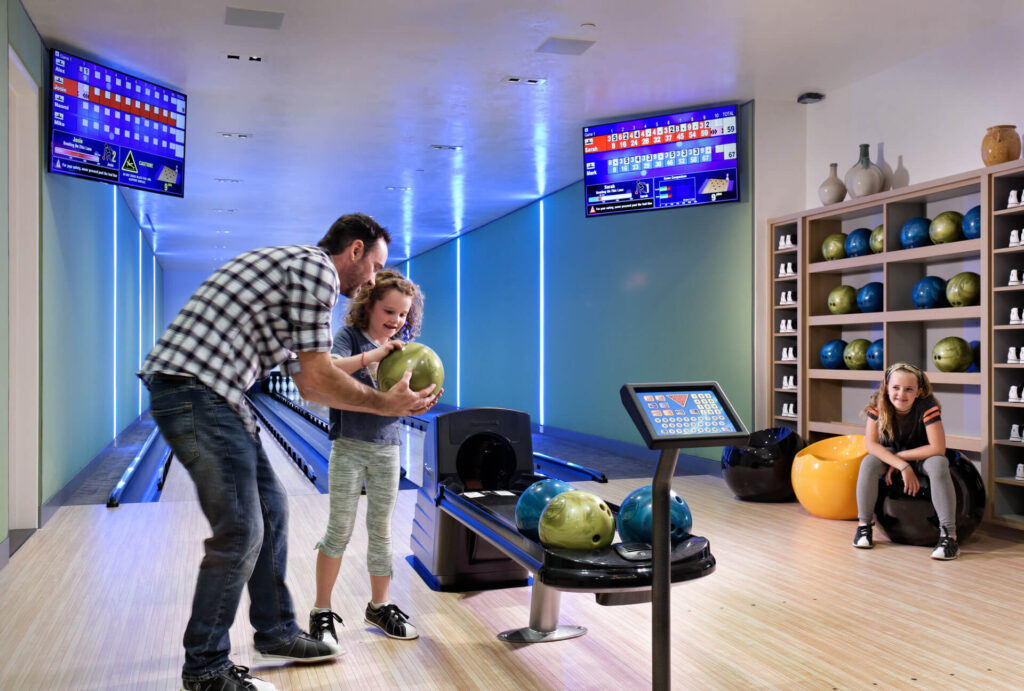
How Long Is A Bowling Lane In Meters?
Following are some general space needs for various lane counts:
Single Lane
To allow enough room for the lane, seating, and equipment, a single bowling lane requires a room that is at least 12 feet (3.66 meters) wide and 100 feet (30.48 meters) long.
Two Lanes
The ideal size of a space for two lanes is at least 100 feet (30.48 meters) long and 24 feet wide (7.32 meters).
Four Lanes
The length would still need to be at least 100 feet (30.48 meters) for four lanes, and the width would need to be approximately 50 feet (15.24 meters).
Eight Lanes
A much larger area, measuring roughly 100 feet (30.48 meters) in width and 100–120 feet (30.48–36.58 meters) in length, would be needed for eight lanes.
Type Of Wood Used in Bowling Lanes
Hard maple is a particular kind of wood that is frequently used to construct bowling lanes. Acer saccharum, also referred to as hard maple, is chosen for its sturdiness, density, and uniform grain. It is the perfect material for building bowling lanes because it is a dense, fine-grained hardwood that can withstand the impact of heavy bowling balls.
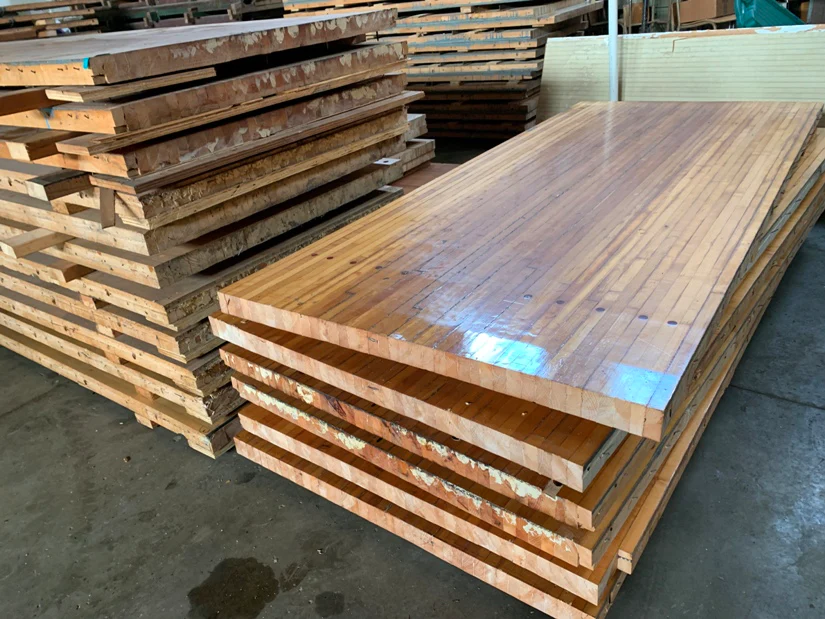
Some bowling alleys combine hard maple with other hardwoods, like beech and birch, to produce a strong and resilient lane surface. To make sure they can withstand the wear and tear of continuous use, these woods are carefully chosen and treated.
A thick, solid, and flat surface is created by laminating several layers of these hardwoods together to create a bowling lane. To give bowlers a consistent and smooth surface, the lanes are then covered with a layer of protective finish, which is frequently made of a combination of synthetic materials.
Hard maple, other hardwoods, and specialized finishes work together to produce the consistent and dependable playing surface that bowlers expect in a high-quality bowling alley.
How Long and Wide is a Mini Bowling Alley?
Mini bowling alleys, also referred to as boutique or duckpin alleys, are intended to be more compact and smaller than conventional bowling alleys. A mini bowling alley’s size can vary, but they are typically smaller to fit in small spaces and appeal to a different demographic.
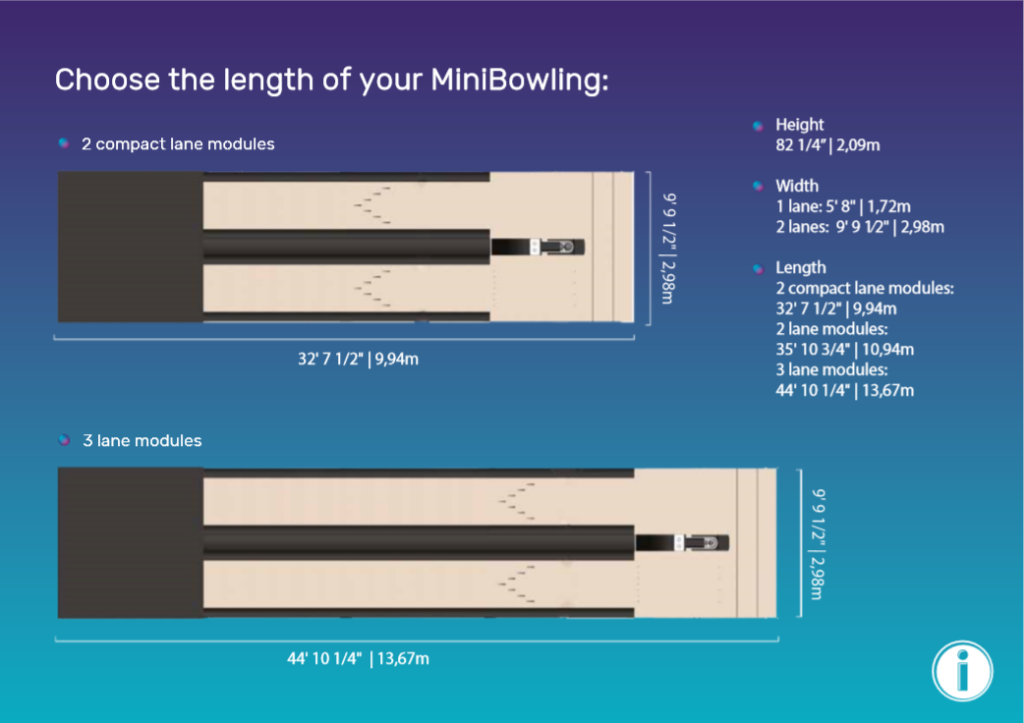
Width
Mini bowling lanes are frequently smaller than regular lanes. A mini bowling lane can range in width from 6 to 9 feet (1.83 to 2.74 meters), or roughly 1.83 to 2.74 meters.
Length
A mini bowling alley lane’s length can vary, but it is frequently shorter than regular lanes. Mini bowling lanes can range in length from 35 to 45 feet (about 10.67 to 13.72 meters).
Due to their smaller sizes, bowling can now be offered to customers in places of business and entertainment that have a limited amount of space. Mini bowling alleys are popular options for various recreational spaces because of their unique and cozy atmosphere as well as their smaller and more intimate setting.
Arrows on Bowling Lane
Starting Point and Width
The tiny but crucial markers known as bowling lane arrows start to move after the 12-foot foul line. This intentional beginning position is selected with care to guarantee that bowlers have enough room to move into position before the arrows are released. Each arrow’s width is standardized to be one board-wide or 1.06 inches. But it’s important to remember that the width can’t go over 1.25 inches to keep alleys uniform.
A “V” Formation
On particular boards, bowling lane arrows are arranged in a pattern that helps bowlers aim their shots precisely. Arrows are typically located on boards 5, 10, 15, 20, 25, 30, and 35. Regardless of where they are on the lane, bowlers can always align themselves thanks to this deliberate distribution.
Another distinguishing characteristic of the arrows is their shape. The arrows, which form the shape of a “V,” direct bowlers to the middle of the lane, improving their chances of hitting the intended target. This “V” formation provides bowlers with a clear path to follow and simplifies the aiming process.
The Middle Arrow
The middle arrow assumes a special role among the arrows. It is the arrow that is most far from the foul line on board 20. The middle arrow is an important marker for bowlers aiming for the pocket because of its purposeful placement. The middle arrow is strategically significant because it serves as a point of reference for locating the sweet spot, increasing the likelihood of hits and spares.
Bowling Alley Plans
Lane Layout
Detailed plans of the facility’s bowling lane layout, including lane spacing, approach areas, seating configurations, and any other facilities like ball return systems and score monitors.
Mechanical Systems
Plans for installing mechanical systems such as HVAC (heating, ventilation, and air conditioning), plumbing, and electrical wiring to assure the facility’s correct operation and safety.
Safety Features
Plans must include safety elements such as emergency exits, fire suppression systems, lighting, and security measures to safeguard patrons and employees while on the premises.
Amenities and Furnishings
Additional facilities, such as seating places, tables, lighting fixtures, signage, and décor, are laid out and designed to improve the bowling alley’s overall mood and comfort.
Parking and Exterior Spaces
Parking spaces, sidewalks, landscaping, and other exterior amenities will surround the bowling alley facility, providing quick access and increasing visual appeal.
Bowling Lane For Home
Designing a home bowling alley needs careful planning and consideration of a variety of criteria, including space availability, price, and personal tastes. Here are some important elements to consider while planning a bowling lane for your home.
Space Requirements
Identify available space for the bowling lane considering the length and width requirements for a regulation size lane. A normal bowling alley is approximately 60 feet from the foul line to the headpin and 42 inches wide. For a home lane, some of these dimensions will need to be altered to adjust for available space.
Lane Construction
Identify materials used for the lane surface, approach, and pin deck, and the construction process used for these areas. Most commonly, synthetic lane surfaces, wood approaches, and synthetic pin decks are used. Consult with professional bowling lane contractors to ensure proper installation and operation.
Lane Equipment
Choose and set up bowling accessories including pinsetters, ball returns, and scoring equipment. You can opt for manual pin setting and ball returns as found in many recreational facilities or automated equipment as found in most commercial bowling alleys, depending on budget and available space.
Lane Accessories
Add ball racks, seats, and lighting to enhance the look and operation of the bowling lane space. Customizing the design and atmosphere to suit your personal taste will allow you to build an area that is fun for family and friends.
Budget Considerations
Find project budget including supplies, construction, equipment, and accessories. A reasonable budget for developing a functional and comfortable home bowling lane should be at least $35000.
Do Bowling Lanes Have A Slope?
Yes, Bowling alleys always have a slight incline known as “lane tilt” or “lane pitch, slope“. The slope allows the bowling ball to travel down from the foul line to the pins and also allows for proper drainage of oil and other fluids used to maintain the lane. The slope is usually very slight and the top of the lane (by the pins) is ever so slightly higher than the bottom of the lane (by the foul line).
This allows the ball to roll freely and maintain speed as it moves down the lane. If not for the slight incline the ball would slow to a stop or move off to one side or the other which would greatly reduce the bowler’s ability to play with accuracy and consistency.
Are Home Bowling Alleys Smaller Than Regulation Bowling Alleys?
Home bowling lanes can be any size but are generally smaller than regulation size bowling alleys found at commercial bowling alleys. This is due primarily to available space in recreational facilities and the need to include other elements in the home facility.
A regulation bowling alley will have ten lanes each approximately 60 feet in length from the foul line to the head pin. Also, a regulation bowling alley is approximately 42 inches wide. But, due to limited space, home bowling alleys will often have fewer lanes and total length than a regulation size bowling alley.
Portable Bowling Lane
A portable bowling lane is a smaller and easily movable version of a standard size bowling lane that can be assembled and used almost anywhere. They are often used for domestic use but can also be used in offices, schools, parties and other events.What are portable lanes intended for?The portable lanes are designed to be a convenient and ready to use option for anyone who wants to experience the fun of bowling without the need of a bowling alley or facility.
Many portable bowling lanes consist of modular sections that can easily be connected and disconnected for quick setup and removal. These sections can include synthetic lane surfaces, gutters, pin decks, ball returns and scoring equipment that’s no different from what you’d find in a traditional bowling alley.
Final Thoughts
Not all bowling lanes are created equal. While it is commonly believed that a standard lane of play in bowling is 60 feet in length. While there are standard requirements that have been adopted by bowling organizations, there are minor differences between lanes in different bowling alleys. However, to create the fairest possible competition in official league and tournament play, the United States Bowling Congress (USBC) strictly outlines the specifications for a standard bowling lane. Some of these differences can heavily affect the game of play and are dictated by various factors including architectural restrictions, deterioration and intentional design.
Bowling alley lanes are often constructed with hard maple wood as well as other hardwoods. This durable wood and specialty finishes provide bowlers with a playing surface that is consistent and reliable. Many mini bowling alleys that are designed for smaller areas have lanes that measure 6 to 9 feet in width and have shorter lengths ranging between 35 to 45 feet.
Skilled bowlers can master the difficulty of each lane by recognizing these differences and adjust their approach and technique accordingly. No matter if league and tournament play is taking place in a traditional or miniature bowling alley, players are given the opportunity to show and demonstrate their versatility and skill of the game due to the unique aspects of each lane. Therefore, bowling continues to be a sport of skill, strategy and a deep understanding of each lane’s nuances in addition to being fun and social.
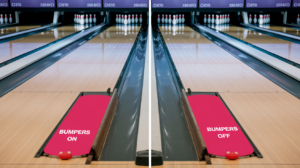




Your blog has quickly become my go-to source for reliable information and thought-provoking commentary. I’m constantly recommending it to friends and colleagues. Keep up the excellent work!